Use Analytics to Boost Productivity – Wholesalers and Distributors

How do you make sure your great products are getting to the right retailers? Analytics will play a pivotal role in your supply chain and your ever-changing industry.
Here’s how new technology and global economic change have had an impact on wholesale and distribution businesses:
- Manufacturers looking for ways to become more efficient and retailers that want manufacturers to be more responsive. Technology disruption means there are now considerable margin pressures.
- In an increasingly digital world, retailers are now able to use online wholesale marketplaces to work directly with manufacturers, cutting out a distributor entirely. It takes more to win their loyalty.
- Competition is getting tougher. Think of giants such as Amazon and the threat of new wholesale and distribution entrants.
- It’s getting harder to find the right talent. There’s a struggle to understand a millennial generation that has different workplace demands – so where is the next generation of leaders coming from?
Problems to solve as a wholesaler or distributor
According to Aberdeen Group, the biggest challenge you face is a need to reduce costs. This is followed by managing growth expectations, changing customer needs, and increased competition.
How do you make sure your great products are getting to the right retailers? Analytics will play a pivotal role in your supply chain and your ever-changing industry.
Here’s how new technology and global economic change have had an impact on wholesale and distribution businesses:
- Manufacturers looking for ways to become more efficient and retailers that want manufacturers to be more responsive. Technology disruption means there are now considerable margin pressures.
- In an increasingly digital world, retailers are now able to use online wholesale marketplaces to work directly with manufacturers, cutting out a distributor entirely. It takes more to win their loyalty.
- Competition is getting tougher. Think of giants such as Amazon and the threat of new wholesale and distribution entrants.
- It’s getting harder to find the right talent. There’s a struggle to understand a millennial generation that has different workplace demands – so where is the next generation of leaders coming from?
Problems to solve as a wholesaler or distributor
According to Aberdeen Group, the biggest challenge you face is a need to reduce costs. This is followed by managing growth expectations, changing customer needs, and increased competition.
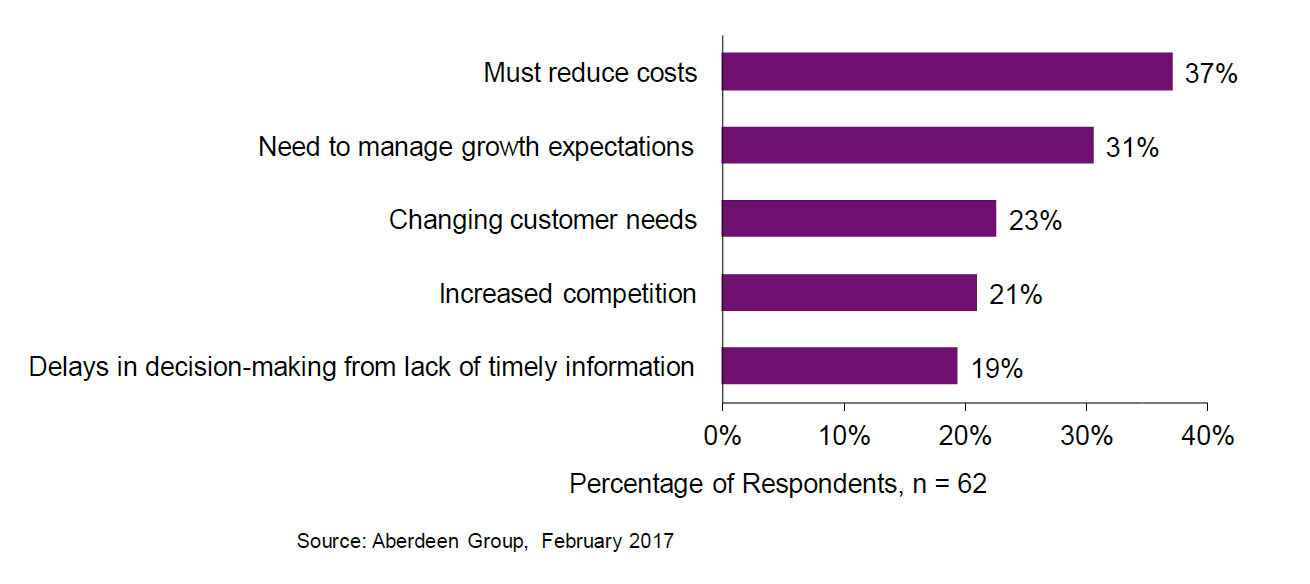
How can you reduce costs? Start by streamlining processes
To lower costs and still improve your customer relationships, Aberdeen says wholesalers and distributors are using the strategies highlighted in the chart below:
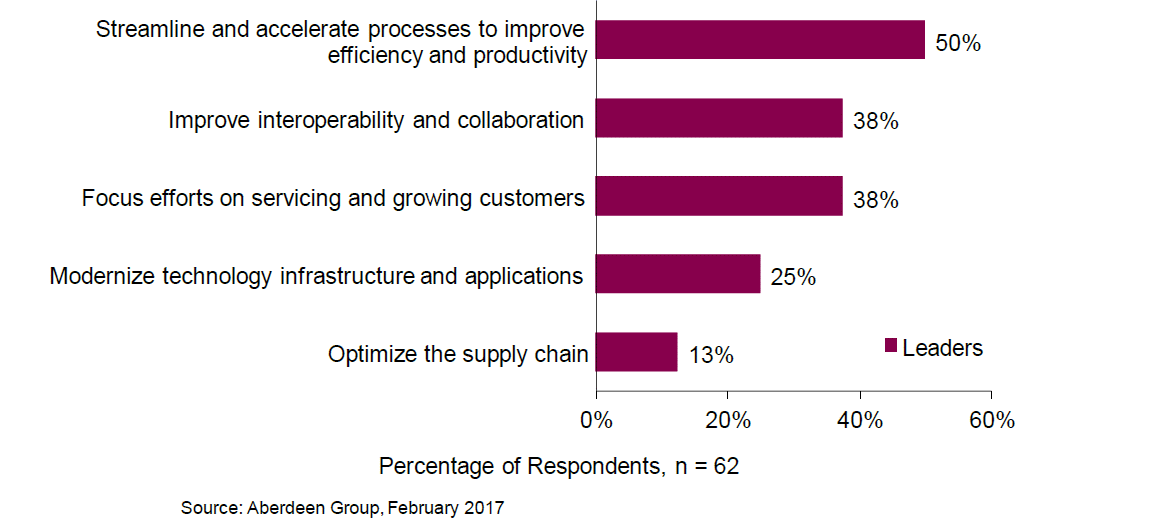
Aberdeen Group, says: “When it comes to lowering costs and improving margins, wholesale and distributor leaders are looking to streamline processes as well as optimize their supply chains.
“Streamlined processes mean that organizations can do more with lower impact on their resources. Optimizing the supply chain means that they can more effectively manage inventory, as well as keep prices for products in check.
“When it comes to pleasing customers, leaders have prioritized collaboration and service. This means getting a better understanding of customer needs, making it easier for them to interact with the business, and changing the way the organization delivers products, often requiring updates to workflows.”
What technology is available?
Enterprise Resource Planning (ERP) is the foundation for the business changes needed. It handles critical back-end processes, such as purchase history, billing and shipping details, supply chain management, financial data, and accounting information. An ERP is the platform for the modernization of technology, improvement in collaboration and streamlining of processes.
Aberdeen stats show you need to have ERP solutions with integrated business functionality, which centers around the process of getting products to customers when they need them through the supply chain in order to become a leader.
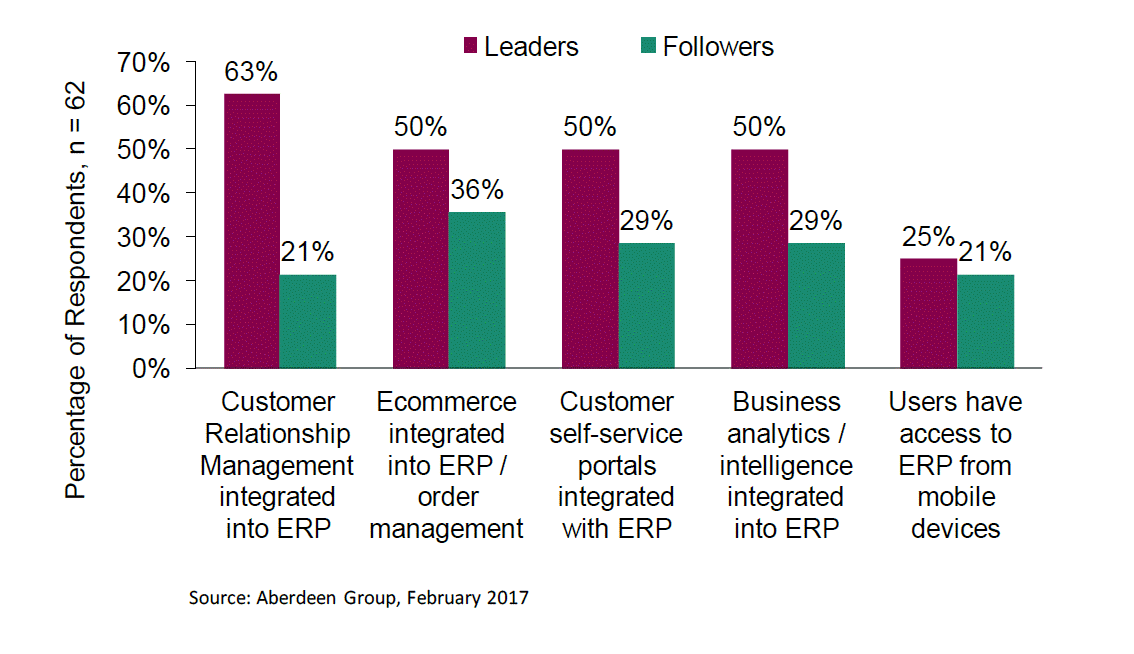
How does ERP technology integration help?
According to the chart above, wholesaler and distributor leaders are three times more likely than followers to have multiple areas integrated with ERP. This is because you can create a centralized portal for customer data, interacting with supply chain functionality, which you don’t have to worry about keeping in sync.
Martin Craze, founder and managing director of Applied Business Computers, says, “Having to wait for a database to update before you can, for example – process bills, replenish inventory levels and arrange product returns for customers – will result in slower operations and an increased risk of database errors. In this case, applying an integrated CRM functionality to your ERP solution will ensure both systems share one database, meaning updates in either system are visible instantaneously. One of the biggest advantages of ERP and CRM integration is that it provides a complete view of your customers.”
As part of the increasingly digital supply chain, you need to realign your business strategy with retailers and manufacturers and look towards e-commerce.
As manufacturers and retailers become more tech-savvy and demanding, many are moving away from the old way of submitting orders via phoning or faxing. B2B e-commerce can improve the way you communicate with retailers and manufacturers, making it easier for you to order from each other. If you don’t do this, your business could become vulnerable to competition with more effective and efficient e-commerce operations.
How data and predictive analytics can help
Aberdeen numbers also indicate that as well as having better access to information, leading wholesale and distribution businesses use the relevant data to make better decisions and become more agile companies.
Leaders are 72% more likely to have business analytics integrated into ERP, which means they can make better decisions backed up with evidence and perform more accurate demand planning.
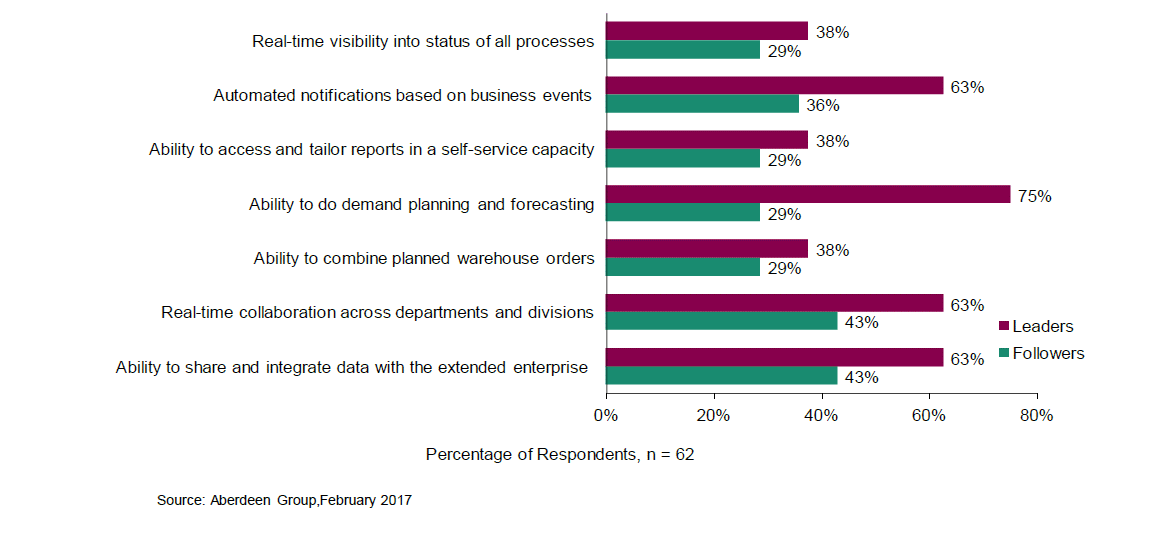
Aberdeen also recommends that you look closely at the real-time functionality in the analytics you use – leaders are 31% more likely to have real-time visibility into the status of all processes and data.
Aberdeen says: “For an organization with a lot of moving parts, such as a wholesaler or distributor, this is essential for handling logistics in an agile manner. Automated alerts can inform actions based on changes in demand or other factors.
“Further, utilizing easy to consume data, in conjunction with analytic capabilities, top performers can better plan and forecast demand (improving customer service and reducing costs) as well as inform changes in workflows, such as combining shipments.”
Paul St Germain, a wholesale distribution industry expert, adds: “In many cases, analysis and insights can be used to generate new forms of differentiation that can be used to disrupt existing markets. For example, Amazon has gained a patent for what it calls ‘anticipatory shipping’, a method to start delivering packages even before customers click ‘buy’.
“The patent exemplifies the analytical capability for organizations to anticipate customers’ needs, even before customers do, and demonstrates one way Amazon hopes to leverage its vast trove of customer data to disrupt rivals. Wholesalers and distributors can – and are – implementing the same kind of change and disruption.”
Although predictive analytics has been available for a while, it’s taken some time for wholesale and distribution businesses to realize its value – in the past, an expert such as a data scientist was needed to extract the information, as well as value.
However, it’s much easier for you to make use of predictive analytics – the availability of real-time data technology makes results immediate, while expert data scientists are no longer necessary, as analytics can be embedded into ERP business processes.
Predictive analytics could help you to:
- Improve communication and understanding between the distributor and wholesaler sales departments and retailers. For instance, it could allow a wholesale or distributor sales representative to provide valuable insight to a retail buyer, and showcase the most relevant and valuable products coming up in upcoming orders.
- Analyze data on what retailers have purchased in the past to predict future sales. Sharing this data with manufacturing suppliers could be extremely valuable, as normally suppliers will only have data on quantities sold rather than information that can help with product strategy.
Central to the success of your business is the need to collaborate – leaders are 46% more likely to have real-time collaboration across business departments and divisions than followers.
Aberdeen says: “Connecting functions, such as supply chain, sales and finance can help organizations meet their efficiency goals. Externally, leaders are more likely to be able to share data with both customers and suppliers. This will improve service, reduce costs, and increase margins.”
Why is cloud ERP beneficial?
Here are some of the reasons why businesses are choosing the cloud, according to Aberdeen:
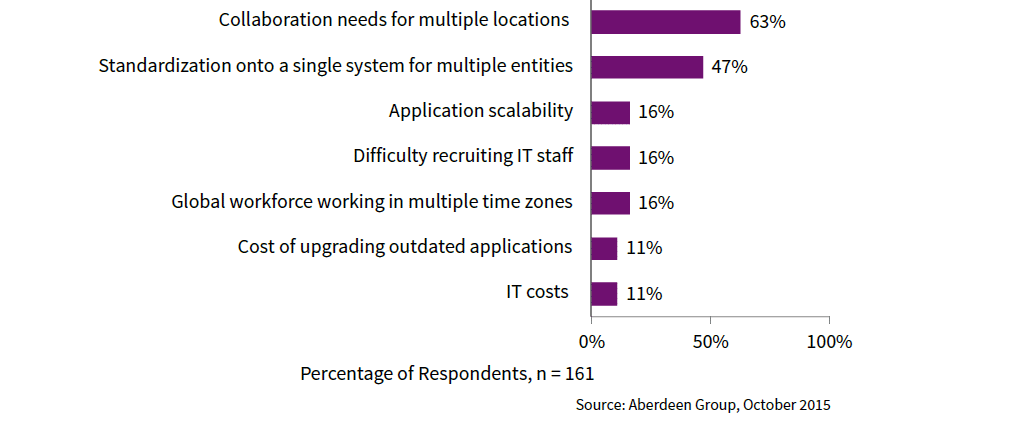
Aberdeen says: “Employees must be able to share data with stakeholders across many locations to ensure demand is accounted for, shipments are delivered on time, and routes are altered to ensure better service. An internet-based cloud solution ensures employees can easily access the data they need wherever they are.”
Then there’s the fact that cloud applications can scale with your business, ensuring solutions still serve their purpose as the business grows – whether you want to expand into more sales channels or pick up new partners.
Aberdeen adds: “There are the challenges that come with outdated applications. It’s costly and time-consuming to update them, and outdated applications just don’t provide access to the most updated functionality and best practices. Not only is this a limiting factor as organizations attempt to be more agile in product delivery, but it also means that old solutions just are not adequate.
“In a cloud solution, updates are handled automatically by the software vendor, ensuring that organizations are always on the latest release.”
At MicroAccounting, we are here to help you do business better. If you’d like to explore products or just ask us some questions, give us a call.
This information appears courtesy of sage.com




